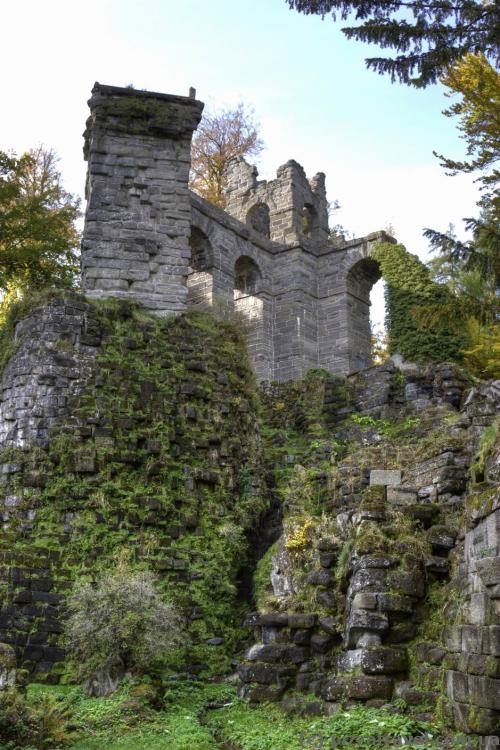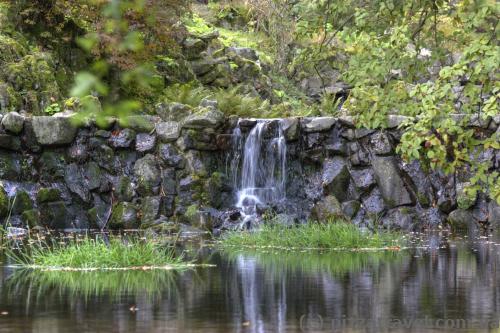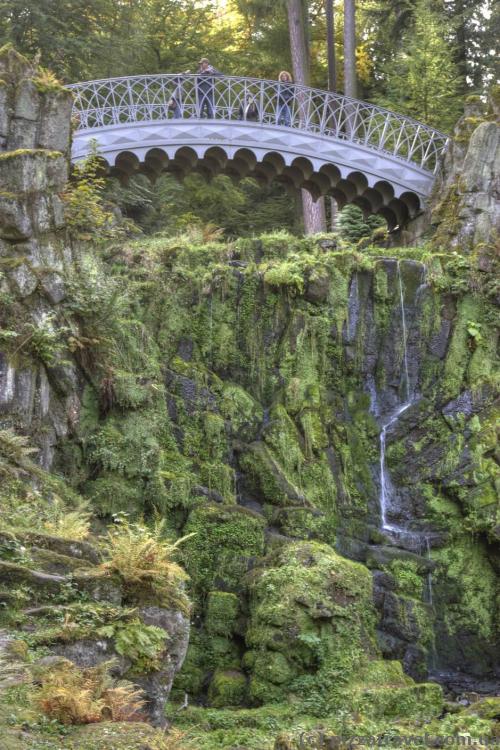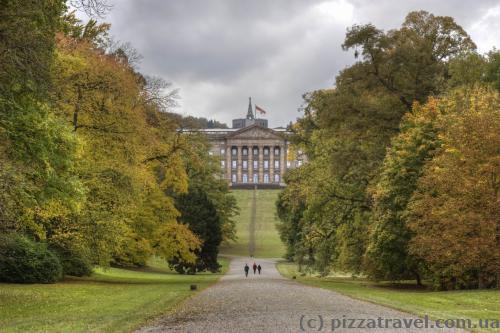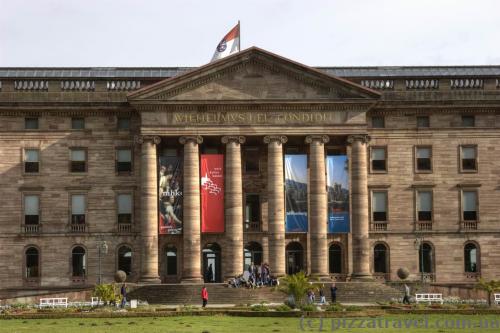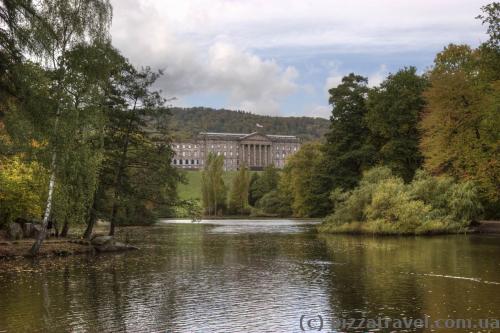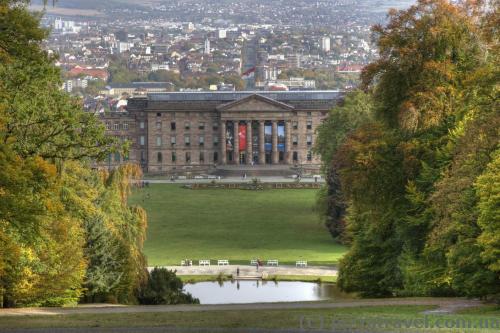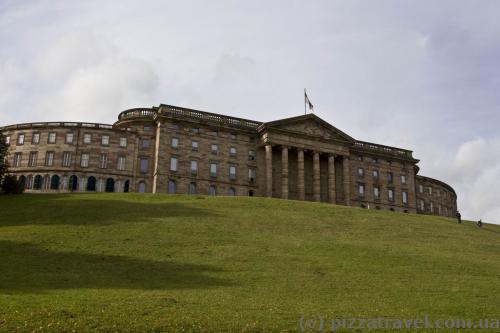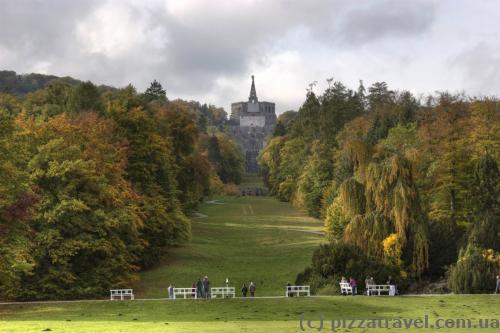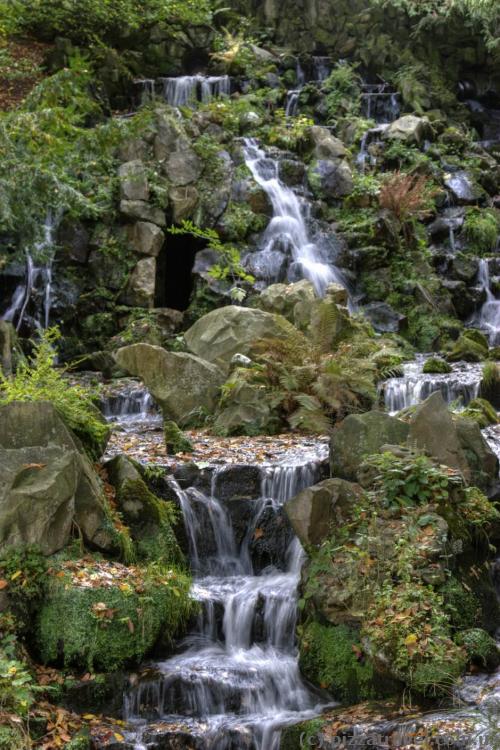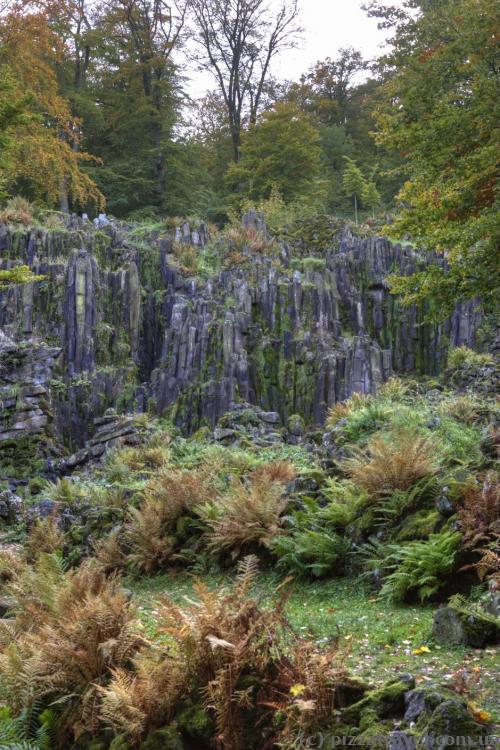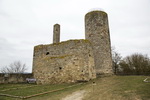There is a a very interesting park in Kassel. Of all the parks we've seen, this one is the most unusual. It lays on the slope of the hill and elevation difference between the lower and the upper points is pretty big. The cascade park is designed to allow the water to flow down from the reservoir at the top.
The park was built in the XVII century by order of the local Count Karl of Hesse-Kassel (1670-1730) in the Baroque style. To implement his plan, he invited the Italian architect Giovanni Gverniero who created the grand complex of the cascades, waterfalls and a pavilion with a pyramidal tower, on top of which stands a monumental statue of Hercules, unofficial symbol of Kassel for nearly three centuries. Copper sculpture of Hercules, 9 meters tall, was created in 1717 by Johann Jacob Anthony and symbolizes the victory of man over nature - a theme that is reflected in the entire ensemble. The second theme of the magnificent ensemble is architectural illustration of battle of titans, described in ancient Greek mythology.
The waterfalls start at a height of 600 meters at the base of the Octagon. Here is the "Big Head" pool with the stone head sculpture of Enceladus defeated by Hercules. When the cascade starts working, the mouth of the head throws a 12-meter fountain in the direction of Hercules. On the sides of the pool there are two niches with staues of Triton and Centaur.
The big cascade starts from the pool. It's a 6-meter wide basalt trench with 24 levels. Each level has a capacity, from which the water begins to fill the lower capacities and so on. There are 535 pedestrian steps on both sides of the cascade. The cascades end at the pool with a grotto of Neptune, whose statue is installed in the grotto. First time water was put into the cascade on June 3, 1714.
The water is collected in a tank and flows down several times a day. In one of the places the real Roman aqueduct is built, from which the water falls down and forms a large waterfall (28 meters). All this action is open from May 1 to October 3, so we decided to come to the park again. However, even without the falls the park is gorgeous, especially in autumn.

Here the aqueduct is at the earth surface level and the water flows into it through a trench. ©Yuriy Buriak
Wooden Devil's Bridge was built in 1798-1799. In 1826, it was replaced by iron one. Under the bridge the water falls from a 10-meter height into the "hell" and then flows into the "hell's pond." These names point to "underworld" as opposition to "heaven" where Hercules went after his death.
Near the park you can see the Wilhelmshöhe Palace of counts Hesse-Kassel (1786-1798). After the Franco-Prussian War, the Prussian king offered the defeated emperor Napoleon III accommodation there. From 1899 to 1918 Wilhelmshöhe was the summer residence of the German emperor Kaiser Wilhelm II. In 1918, after the defeat of Germany at the end of World War I, Paul von Hindenburg organized and led the withdrawal and demobilization of the German troops there.
The middle tract of the castle was substantially destroyed during the Second World War. The first reconstruction was made in 1968-1974 by the functionalist architect Paul Friedrich Posenenske. He reconstructed the exterior completely but changed the structure of the interior for its new function as an art museum. From 1994 to 2000 a renovation was made to bring it closer to the original structure.
Today the Wilhelmshöhe Castle Museum houses the antiquities collection, the Gallery of the Old Masters and the Graphic Arts Collection. The Gallery of the Old Masters has one of the largest collection of works by Rembrandt.
Lowenburg is an artificial castle built between 1793 and 1800 and designed by Christoph Heinrich Jussow. Idea to build the castle belonged to Wilhelm IX who wanted to create a building similar to an English medieval castle. The castle looks like a real fortress with a moat and a drawbridge. Despite the fact that it has no rich history, it looks great. The contents of the castle are mostly 16-17 century armour and weapons.
Getting there: By tram #1 from the downtown to the Wilhelmshöhe stop or to the Wilhelmshöhe train station, and from there on foot or by tram #1. Elevation difference between the tram stop and the Octagon with Hercules is about 350 meters, so be prepared well =)

